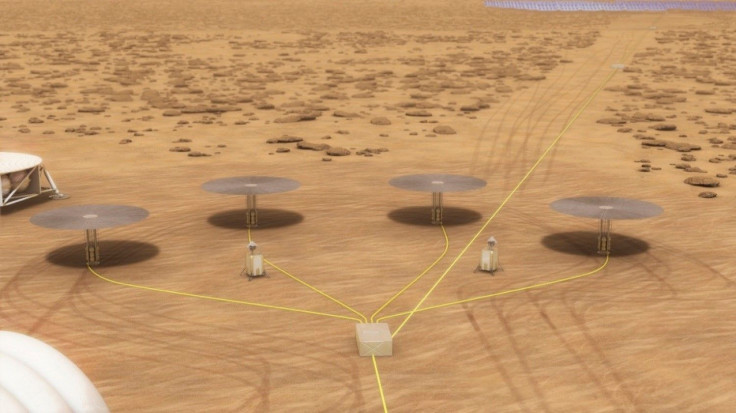NASA Wants To Power Future Mars Habitats With Kilopower Reactor

NASA is pushing for a viable energy source that can be used in space. The quest to put a colony of people in space starts with being able to make a small habitat for astronauts to live, provide a garrison point and a fuelling station in space, which are capable of using raw materials indigenous to the red planet and to create essentials like oxygen, water and fuel.
After the launch of Phase 3 of NASA’s 3D Printed Habitat competition worth $2 million, the agency’s Space Technology Mission Directorate (STMD) has provided multi-year funding to the Kilopower project. Under this project, NASA will partner with the Department of Energy’s Nevada National Security Site to appraise fission power technologies. This is said to be the key project that will power NASA’s dreams of creating a sustainable space habitat and is set for tests this month.
“The Kilopower test program will give us confidence that this technology is ready for space flight development. We’ll be checking analytical models along the way for verification of how well the hardware is working,” said Lee Mason, STMD’s principal technologist for Power and Energy Storage at NASA Headquarters, in a NASA press release.
The ultimate aim of the Kilopower project would be to provide a power source in space for essentials that is independent of the sun. The project will provide a long term power supply that ranges from 1 kilowatt to 10 kilowatt.
The generator can power anything from a toaster to an entire house, according to a video released by NASA about the project goals. This could make it a fundamental but integral development in our growing urge to expand into space.
The prototype power system for the Kilopower project uses a solid, cast uranium-235 reactor core, the press release reported. This small cylindrical core is used to generate heat which is transferred via passive sodium heat pipes. The heat energy the sodium heat pipes receive is a direct by-product of fission inside the core. This heat is converted to electricity by high-efficiency Stirling engines. It then drives a piston inside the sterling engine, which creates mechanical energy that is harnessed with an alternator to produce electricity, similar in some aspects to an automobile engine.
This energy counters the deficiencies of solar power.
According to Mason, “It solves those issues and provides a constant supply of power regardless of where you are located on Mars. Fission power could expand the possible landing sites on Mars to include the high northern latitudes, where ice may be present.”
NASA has been using the radioisotope thermoelectric generators (RTGs) for the past five decades. Several missions including the Apollo expeditions to the moon, the Voyager mission, Cassini and the New Horizon probe were powered by RTGs. The limitation here is the amount of power generated.
The RTG generates power through the heat produced from the degeneration of radioisotope source. Since there are no moving parts involved, it is capable of generating only a couple hundred watts of power.
The Kilopower project was named so to provide the team with short-term goal of achieving a kilowatt of generated power in space. This could in the future lead to massive power generation missions on Mars and also the powering of mini townships of research hubs in space much like the International Space Station.
“What we are striving to do is give space missions an option beyond RTGs, which generally provide a couple hundred watts or so,” Mason said. “The big difference between all the great things we’ve done on Mars, and what we would need to do for a human mission to that planet, is power. This new technology could provide kilowatts and can eventually be evolved to provide hundreds of kilowatts, or even megawatts of power.”
The team is now looking to safely run tests on Earth and then possibly move the generator into space. The transportation will be easy because of its compact size. The Kilopower hardware is set to undergo a full-power test lasting some 28 hours.
“The upcoming Nevada testing will answer a lot of technical questions to prove out the feasibility of this technology, with the goal of moving it to a Technology Readiness Level of 5. It’s a breadboard test in a vacuum environment, operating the equipment at the relevant conditions,” said lead researcher Marc Gibson.
“The technology doesn’t care. Moon and or Mars, this power system is agnostic to those environments,” added Mason, commenting on the versatility of the technology which could provide new avenues in space exploration.
© Copyright IBTimes 2024. All rights reserved.











